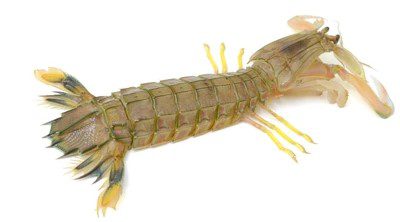

Mantis shrimps are a nutritious source of protein and fatty acids that can provide various health benefits to dogs, including reducing food allergies, regulating organ functions, and promoting skin health. However, it is important to note that mantis shrimp are high in sodium and thus should be consumed in moderation. Proper preparation can reduce the risk of foodborne illnesses.
Mantis shrimps are a great source of omega-3 and omega-6 fatty acids, which promote skin health, reduce inflammation, and may help reduce food allergies in dogs. They also provide essential minerals such as calcium, iron, and magnesium to help maintain organ function.
The consumption of mantis shrimps in large amounts may result in sodium poisoning and dehydration due to their high sodium content. Additionally, their shells can be a choking hazard if not removed and can cause intestinal blockage. There could also be parasitic marine snails on the abdominal surfaces of mantis shrimp that can cause disease to dogs if ingested.
It is important to thoroughly clean mantis shrimps to remove dirt and debris before cooking. Boiling or steaming is the recommended method of cooking, without the addition of any seasoning. The shells can then be removed and cut into bite-sized pieces. For a less messy way of feeding, mantis shrimp can be given as freeze-dried, air-dried, or dehydrated treats or as a crunchy topping to meals.
Mantis shrimps, also known as coral shrimps, sea locusts, or sea crickets, are a relatively unknown yet nutritious seafood for dogs. Originating in the warm waters of the Indian Ocean and the Indo-Pacific, mantis shrimps can provide various health benefits to dogs, such as reducing food allergies, regulating organ functions, and promoting skin health. Additionally, they are rich in omega-3 and omega-6 fatty acids, calcium, iron, and magnesium, which can help keep organs functioning properly. However, they should be consumed in moderation due to their high sodium content, which could lead to sodium poisoning if eaten in large amounts. It may also be beneficial to clean the mantis shrimps thoroughly and cook them without seasoning before removing their shells and cutting them into bite-sized pieces. Mantis shrimps can be cooked or included as treats in a dog’s meal, such as dried treats or as topping for their regular meals.
As an alternative but equally nutritious source of proteins and healthy fats, salmon, sardines, and herring are recommended. It is also important to consider your pup's tolerance – if this is your first time introducing them to any type of seafood, try feeding them a small amount to gauge how they will react.
Readers may wonder if it's worth the effort to feed mantis shrimp to their pet or whether there's other similar alternatives. It’s definitely worth considering mantis shrimp as a healthy add-on for your pup's meals as long as you do it responsibly. They are widely available and easy to prepare, making them an affordable option. Other alternatives such as salmon, sardines, and herring are also good sources of vitamins and minerals, but some might be pricier.
How has your pup been enjoying mantis shrimps so far? Share with us your experiences and tips for proper preparation with other pet parents to help them decide what to give their pup! No matter what you decide for your furry friend, we wish you and your pup a healthy and happy life together.